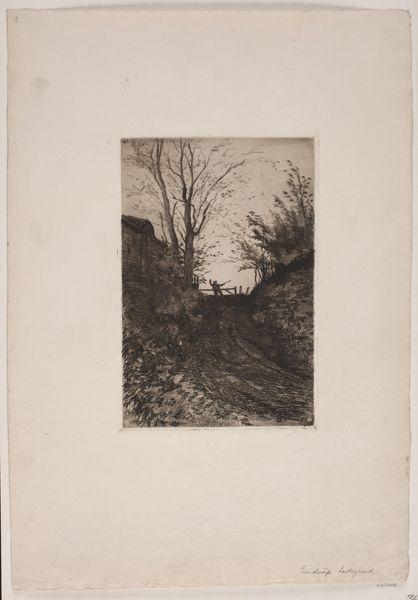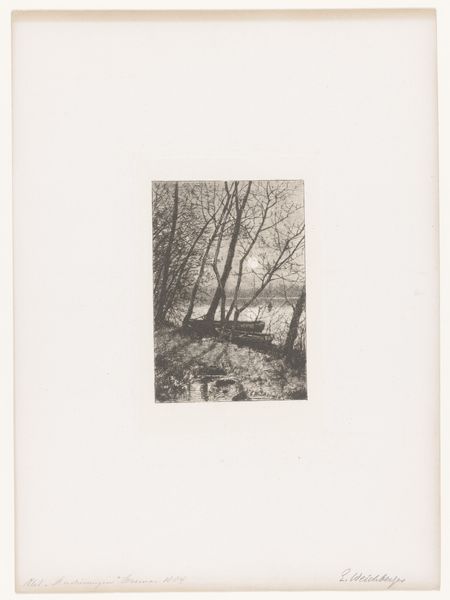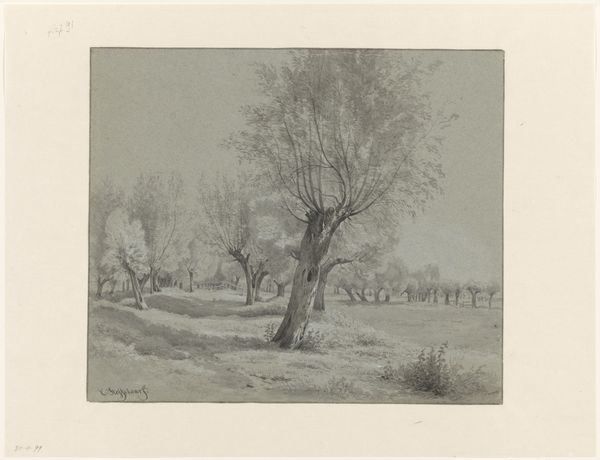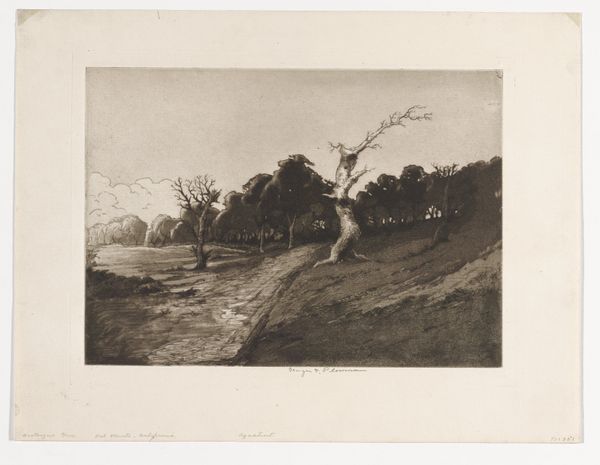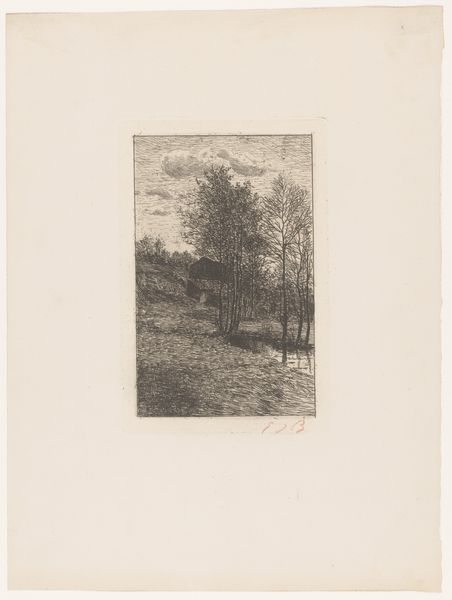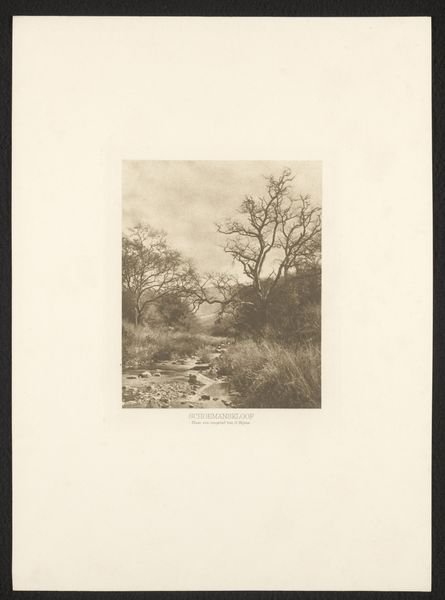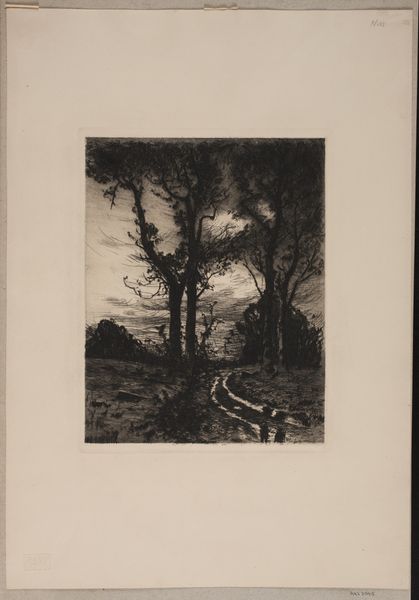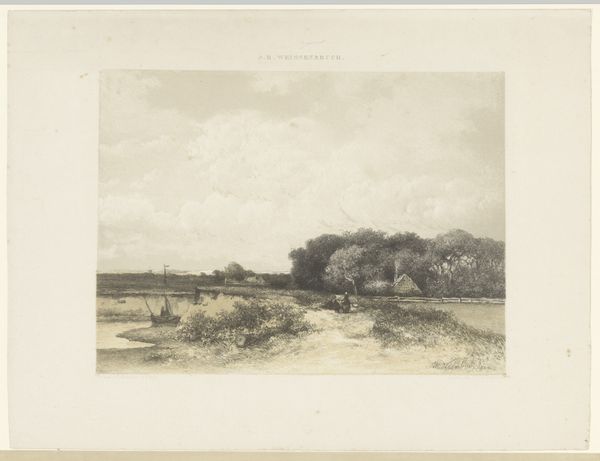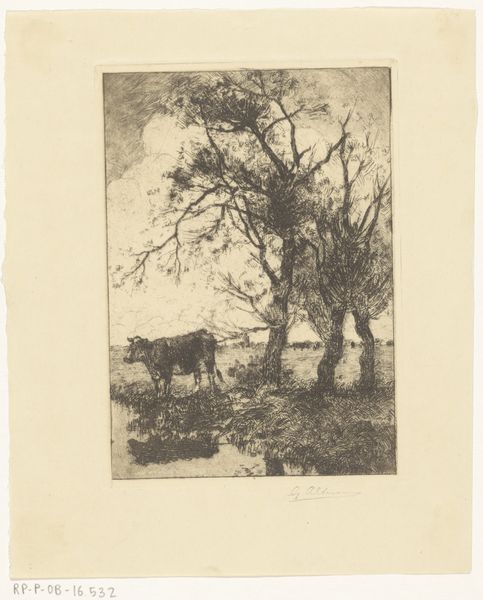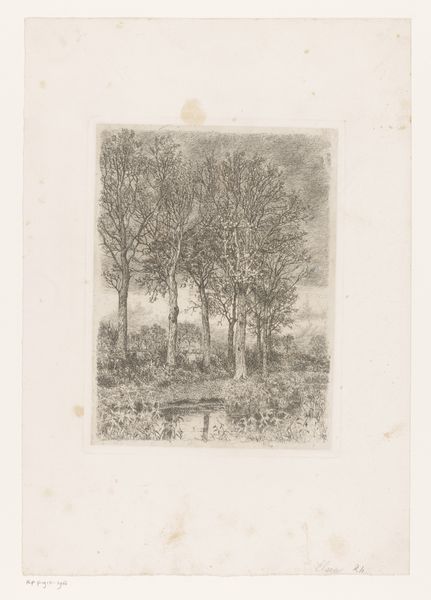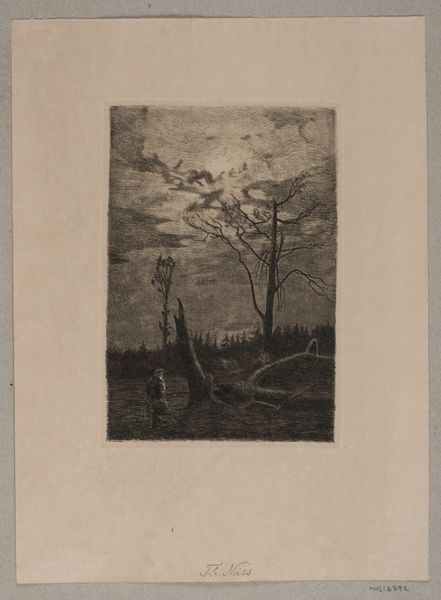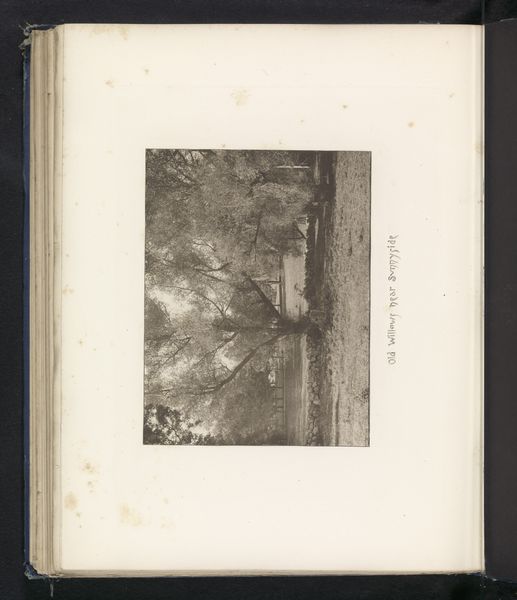
Dimensions: height 454 mm, width 313 mm, height 545 mm, width 443 mm
Copyright: Rijks Museum: Open Domain
Editor: Here we have "Gevangen worden geëscorteerd," or "Captives Being Escorted," an etching by Max Klinger from 1883. It's a bleak landscape, a group of people being led away by soldiers on horseback. What strikes me is how hopeless it all feels. What do you see in this piece? Curator: I see a stark commentary on power and oppression, reflective of the social and political tensions brewing in late 19th-century Europe. Klinger, associated with early German Expressionism, often used his art to critique societal structures. The escort itself represents not just physical captivity but the crushing of individual will by institutional force. Consider how the landscape itself, bare and unforgiving, mirrors the prisoners' plight. What might the 'Marztage' [March days] signify? Editor: Given the title at the bottom, "Marzstage III," I imagine it references specific historical events happening in March, potentially acts of civil unrest or political crackdown? Curator: Precisely. By grounding the scene in a specific, even if generalized, timeframe, Klinger links individual suffering to systemic issues. It speaks volumes about the state's control, doesn't it? The moon, barely visible, mocks any sense of freedom and enlightenment. Editor: It makes me wonder about the role of art as a witness, especially during times of injustice. Does Klinger see himself as an activist through his art? Curator: Klinger isn’t just depicting; he's actively indicting. He uses his mastery of printmaking to amplify the voices of the marginalized. His work challenges us to confront uncomfortable truths about authority and the cost of conformity. Considering the rise of nationalism at this time, Klinger seems to position himself against the grain. Editor: That's a powerful idea. I'll definitely look at Klinger's work with new eyes from now on, considering not only the aesthetic, but the underlying sociopolitical messaging. Thanks for helping unpack that. Curator: Absolutely. It’s crucial to recognize how artistic choices reflect and shape broader conversations about justice and power, and I hope this continues to inform your interpretation of art!
Comments
No comments
Be the first to comment and join the conversation on the ultimate creative platform.
